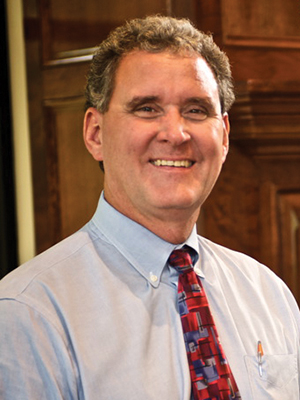 David Ammons
David AmmonsDavid Ammons is president of Retirement Living Associates, Inc. (RLA), a company which provides planning, development, marketing, and management services for new and existing retirement communities. He has worked in and with Senior Living Communities since his graduation from Wake Forest University in 1985.
Although there are hundreds, probably thousands, of articles, papers, and books on the aging of America, I want to share my views on its impact on the senior living community industry and, more specifically, the aging of our North Carolina population.
Following a few facts and figures, I will share some of the impact, we believe, these numbers will have on managers and developers of retirement communities with a few final thoughts on the impact on residents in these communities.
The older population is defined in two groups. The first is persons 65 years of age and older; the second, 85 years of age and older.
- The first group, those 65 years and older, numbered 35 million in 2000, growing to 46.8 million in 2015. This group is projected to grow to 71.5 million in 2030. In the simplest of terms, this group is projected to more than double in size in our nation over the 25-year period from 2005 to 2030. This projected growth is amazing!
- In North Carolina, the second group, those 85 years or older, was .9 million in 2000, growing 1.4 million in 2015 and increasing to 2.2 million in 2030. This group is projected to not only double but to go beyond a double factor by approximately 12 percent.
Perhaps more importantly, as a percentage of the total population grows in both the United States as well as North Carolina, this group of seniors 65 years or older will increase from approximately 14.5 percent to almost 22 percent. That means instead of 1 out of 7 persons, it will be more than 1 out of every 5 persons in this particular group.
This impact has huge ramifications in many areas. The politicians are happy to share what this increase may or may not do to Social Security funds. From my point of view, as a person involved in the senior retirement community industry, I am concerned with how many of these will be able to afford to live in the kinds of senior communities that we, as an industry, currently offer. It makes me question if they cannot afford them, then how will we, as a nation and state, support this group? That is a question that goes way beyond the scope of this article to answer.
Another practical matter is the question of who will be available to provide the many jobs and services that support this growing aged segment of our population. Services such as producing supplies, serving meals, cleaning homes, and providing hands-on nursing are jobs that will become harder and harder to fill.
I believe these numbers will continue to change retirement community options, increase the automation of production, and perhaps increase non-human services and medical assistance, as well as increase other solutions that today are only imagined.
Great things are yet to come!

